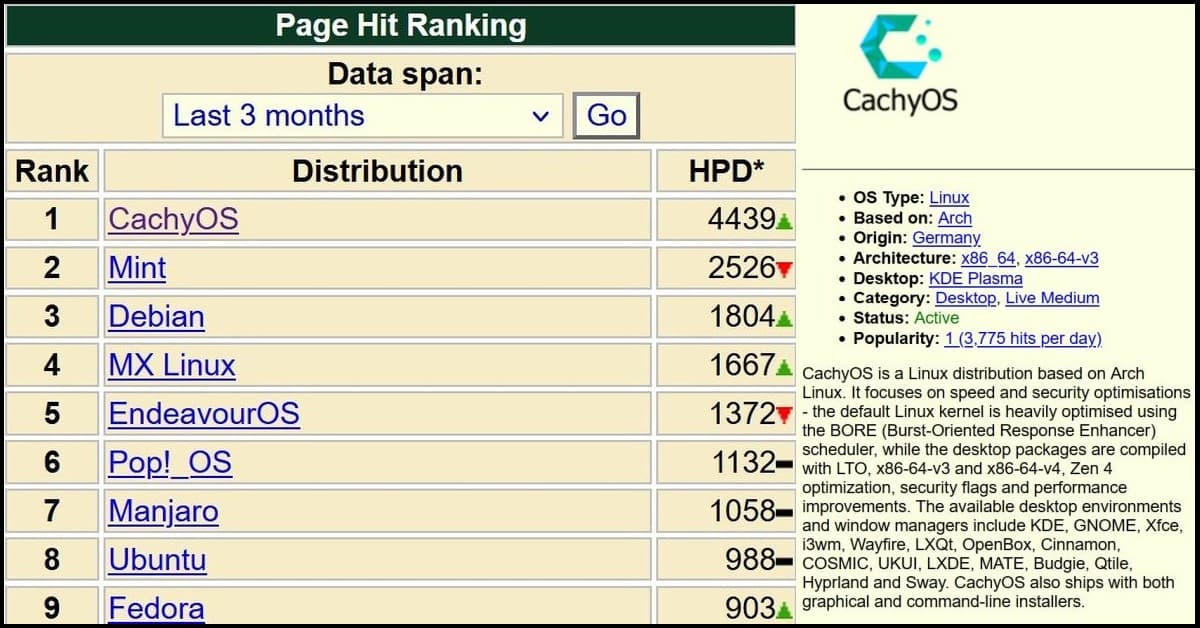
CachyOS is a new-ish Linux distribution, first released in July 2021, that has rapidly gained popularity due to its focus on performance and responsiveness. Built on the Arch Linux base, CachyOS implements optimizations like its custom BORE scheduler, CLANG compiler, and advanced optimization flags to provide a fast, polished, and stable experience, especially for gaming and desktop users.
It currently tops DistroWatch’s popularity rankings. If you’re eyeing it for gaming or high-performance setups, it’s matured into a solid, user-friendly option rather than a fresh experiment.
Normal People Can Use Linux Too
Linus Torvalds has explained why the so-called Linux “Desktop” OS “Stinks”: “For the last 20 years, I kept hearing how Linux on the Desktop would go mainstream in ‘five years.’ One of the problems Desktop Linux has is it’s not made for normal people, and by normal people I mean, obviously nontechnical people.” You can read his full thoughts at Frank’s World.
- I am one of those “normal people” Linus speaks of, but have been experimenting with, testing, and using Linux as a secondary OS since 1996
- Even normal people can use Linux successfully with the right approach and distribution choice
- Ubuntu remains the clear #1 Linux OS, but “normal people” using Linux often prefer other distributions according to DistroWatch rankings
- Arch Linux users are famous for their enthusiasm – “hey, did you know I use Arch Linux” has become a running joke in the community
My two favorite Linux distributions are Porteus Linux Cinnamon and Fedora Cinnamon SPIN. Porteus for its lightweight and easy portability, and Fedora Cinnamon SPIN for a full and powerful OS – with lots of hardware support. However, I decided to test CachyOS since it has risen remarkably fast on DistroWatch’s rankings despite only launching in 2021. When a new-ish Arch Linux distribution jumps to the top that quickly, it deserves investigation.
Why Windows Users Might Try Linux
Reviving Old Hardware with Linux
- Linux can help bring your old laptop or desktop back to life when it’s struggling with modern Windows
- Save money by avoiding new hardware purchases – create a spare computer for experimentation
- Test different operating systems without risking your primary Windows machine
My Linux Test Computer Frankenstein (AKA – ‘Frank’): 8/31/2022 – New computer made from older ones. Cooler Master Elite 130. ASUS PRIME H310I-PLUS mini-ITX MoBo. Intel® Core™ i9-9900 Processor. Noctua NH-L9i, Premium Low-Profile CPU Cooler. 16GBs (8×2) memory kit. 500W ATX PSU. ICY DOCK ExpressCage MB732SPO-B. GeForce GTX 1050 Ti OC 4GB GDDR5 (GV-N105TOC-4GD) GPU.
Why CachyOS?
- Optimized Packages and Repositories: “CachyOS provides a large selection of optimized packages specifically compiled for various modern CPU architectures.”
- Custom Kernel Tuned for Performance and Stability: “..cherry-picks patch sets that have not been mainlined or are not included in the stable revision of the kernel. Therefore, these patches undergo internal testing before being released to users to ensure that stability isn’t impacted.”
- Advanced CPU Scheduler Support: “BORE (Burst-Oriented Response Enhancer): For users who need maximum interactivity, our kernels support the BORE scheduler” – is a patch set that enhances EEVDF (the default Linux kernel scheduler).
- CachyOS Hardware Detection: “(better known as chwd) enables us to power a variety of hardware by installing the necessary packages and drivers for the running system. This includes systems running NVIDIA’s graphics cards, T2 Macbooks, and handheld devices such as the Steam Deck and ROG Ally.”
- Customizable Installation Process: The “installer lets users customize their system by choosing the desktop environment, packages, filesystem, boot manager, kernel, and more to fit their needs”.
CachyOS Installation Guide
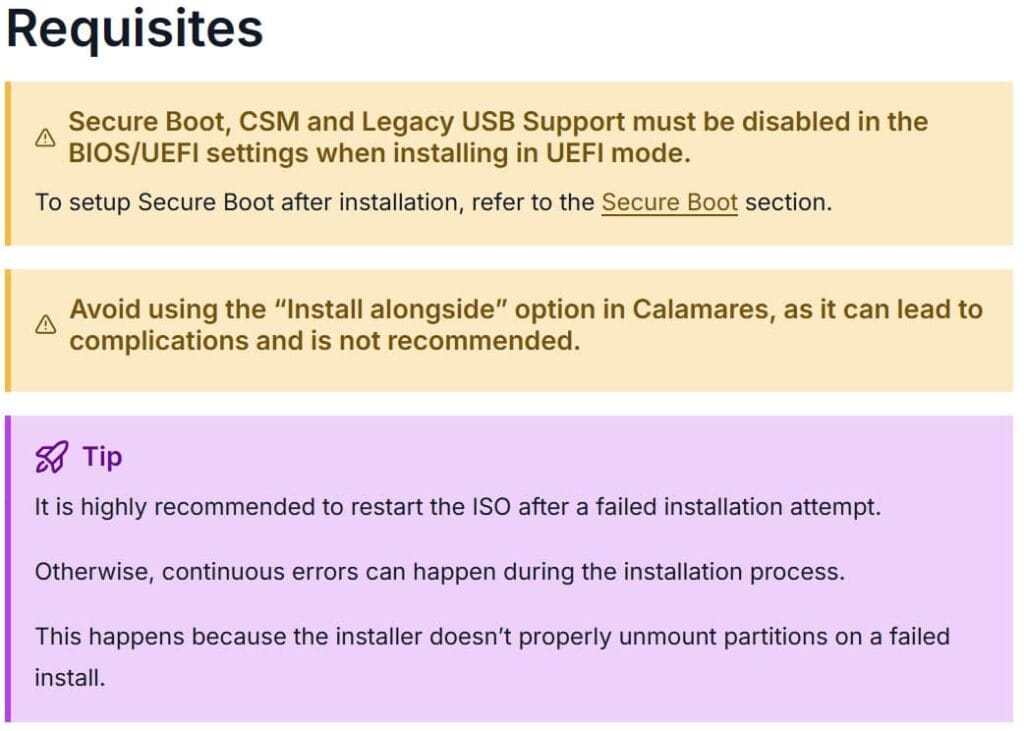
Download link is HERE. I used balenaEtcher to create a bootable USB installation disk. Their installation guide is HERE.
As the above Requisites pic reflects – there may be failed attempts at installing. I had three outta five that failed; however, I was also trying to grab screenshots of the process. One failed attempt was trying to install on a 64 GB SanDisk USB—any Linux OSes I use are installed on USBs. Another was before doing this – “Secure Boot, CSM and Legacy USB Support must be disabled in the BIOS/UEFI settings when installing in UEFI mode.”
Welcome to CachyOS:

You’ll click on the “Launch installer” option – that opens Bootloader options:

I went with the Systemd-boot(Default) option. That opened the CachyOS Installer (Calamares):
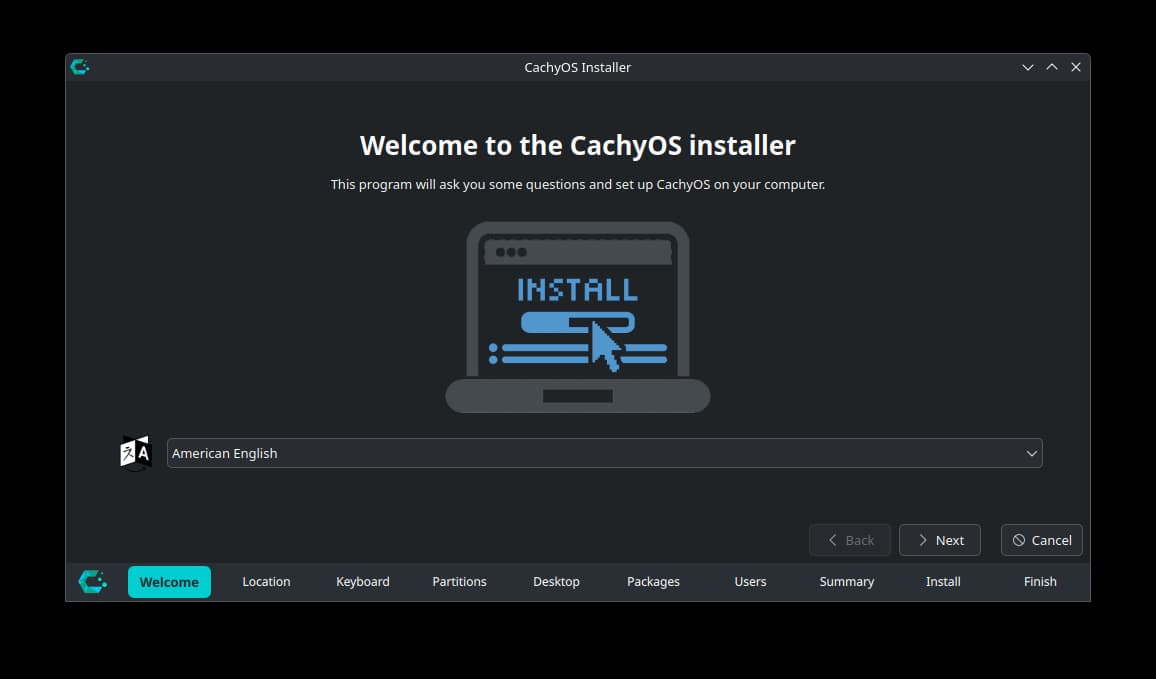
Next opens Location:
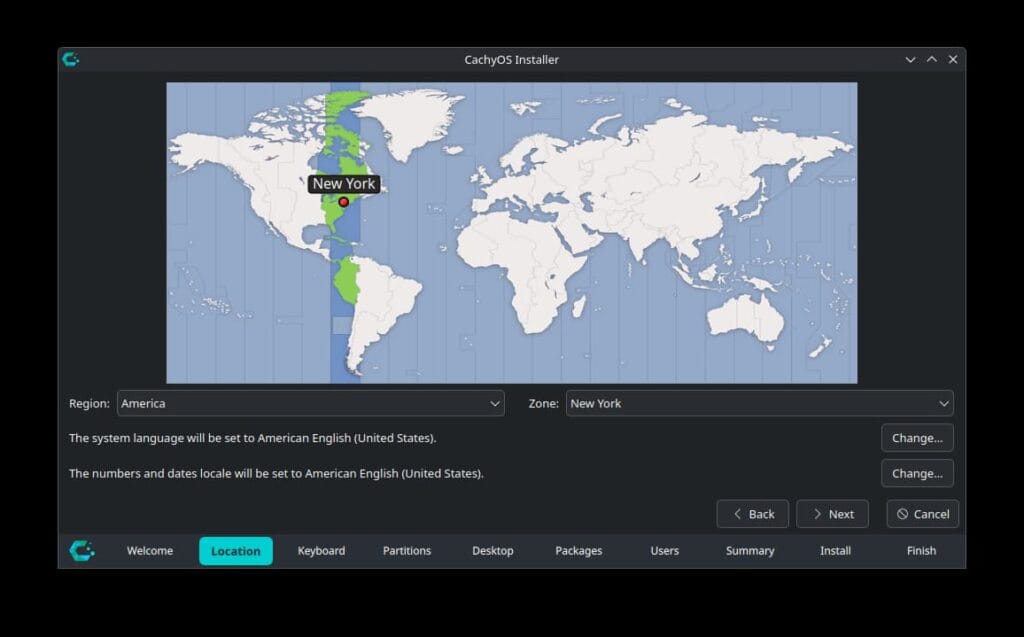
Next then opens Keyboard:

Next opens Partitions – be sure the correct “storage device” is selected:
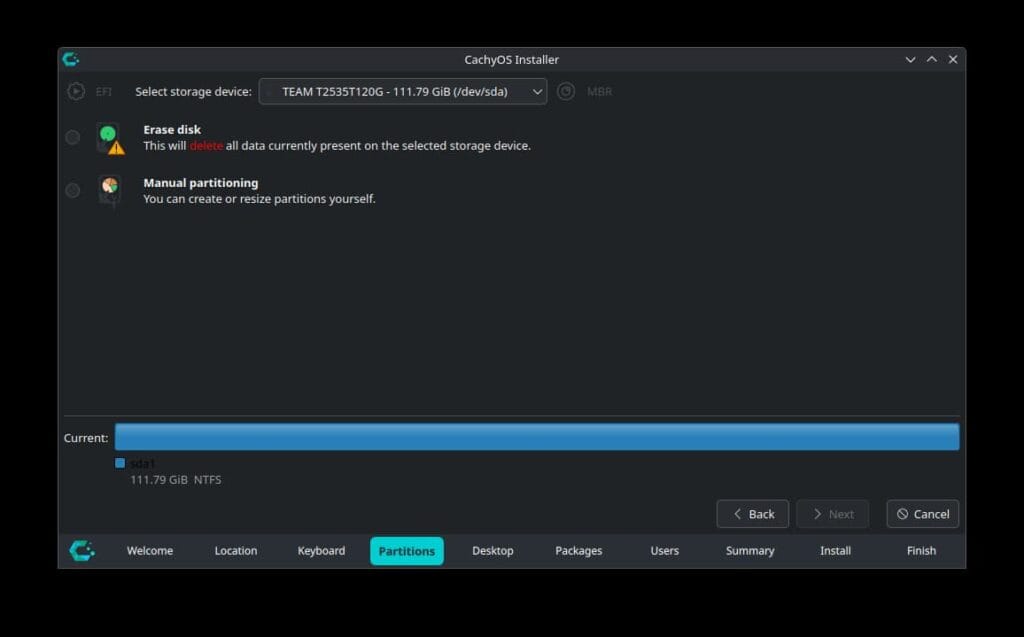
Then check the Erase disk option:
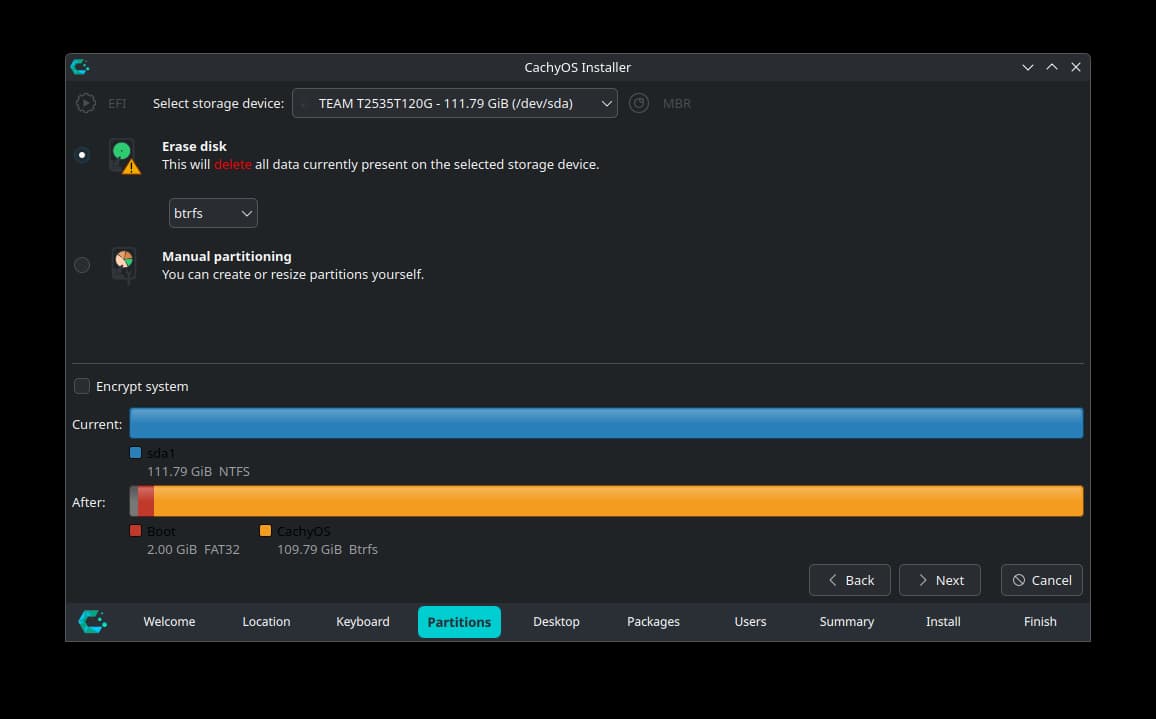
Next is the Desktop options. I went with Cinnamon DE because it is the closest to the Windows graphical user interface (GUI), IMHO. Their Plasma Desktop seems to be their main Desktop Environment (DE) and it is a great option—tho I believe Plasma DE is just too busy for me.

Next is the Packages – I just went with their default selections:

Next is the Users – name and password – the Linux ‘Nanny’ is BIG on passwords for everything and/or actions (more on that later) so check the “Use the same password for the administrator account.”:
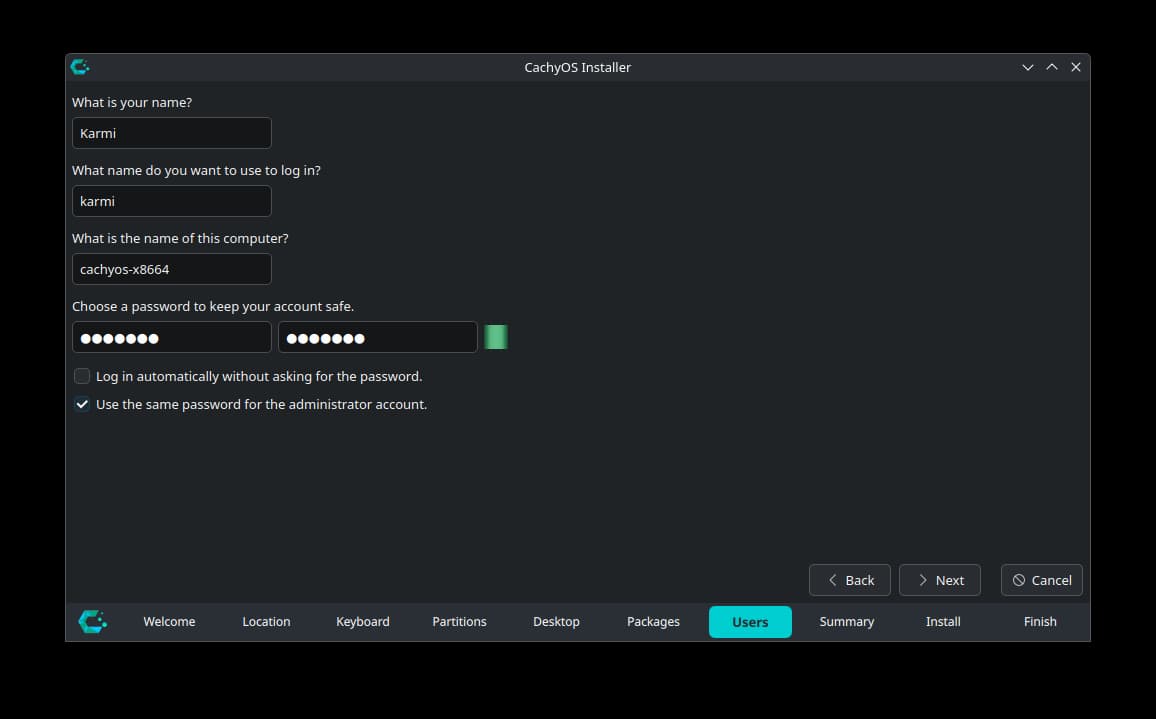
Next is the Summary:
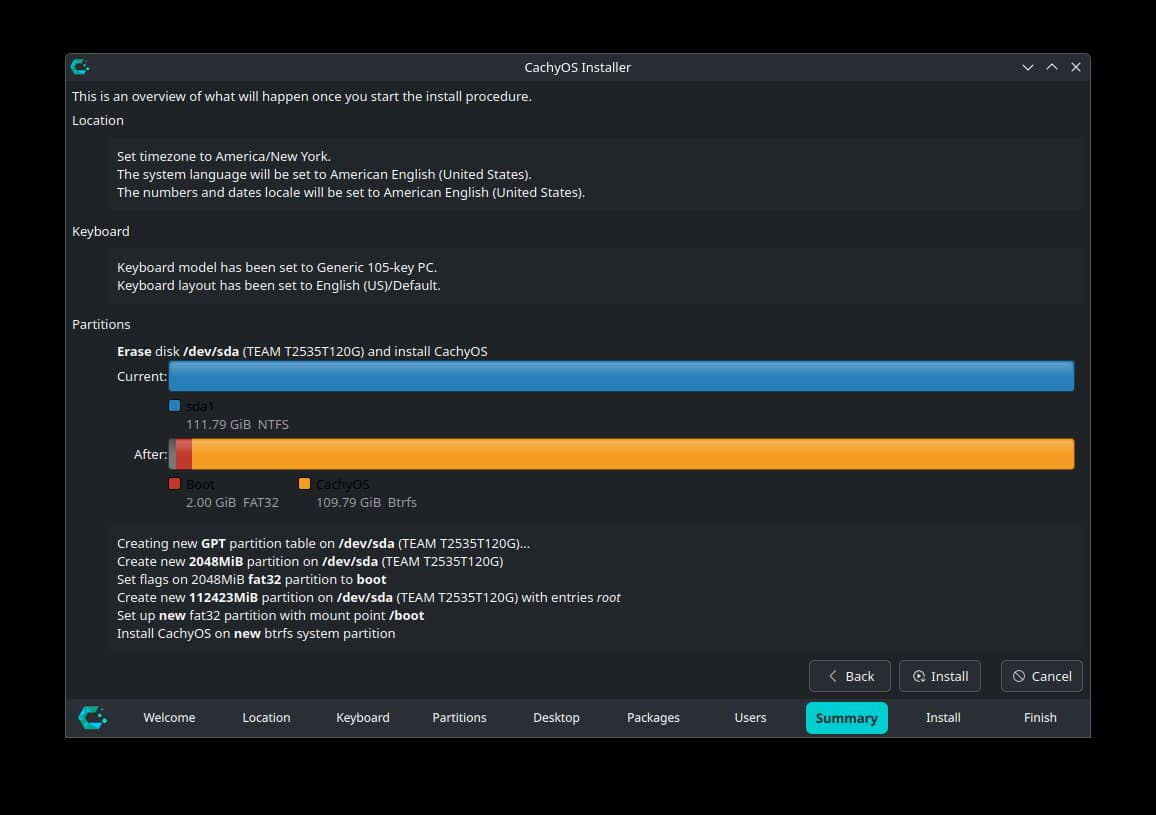
Select Install next:
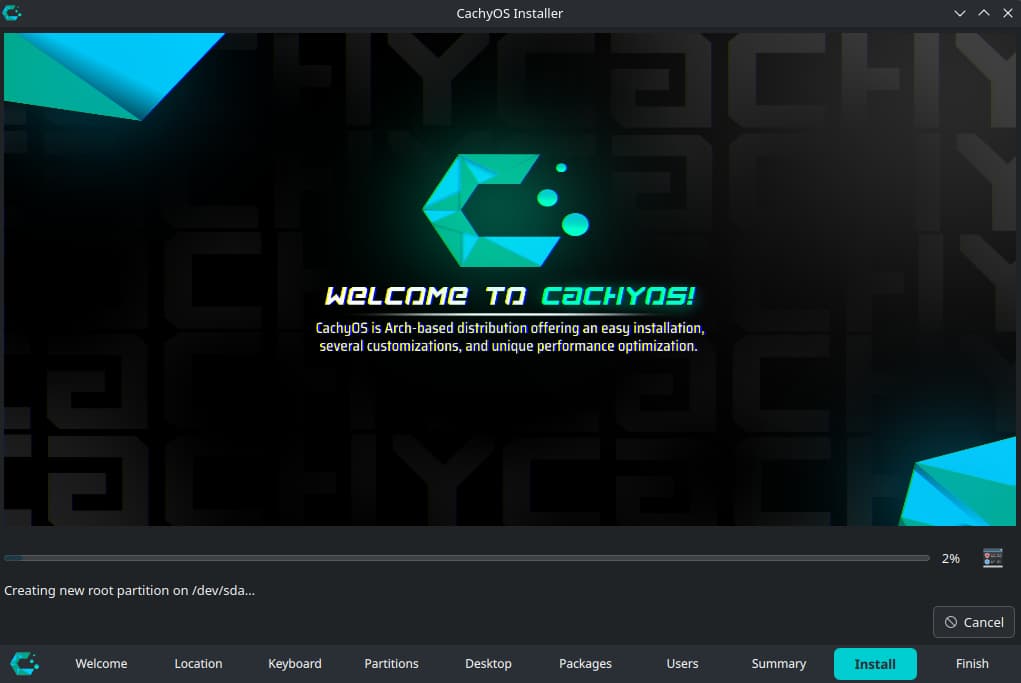
CachyOS First Impressions and Reality Check
Desktop Environment After Installation: Shows CachyOS with Cinnamon desktop environment running smoothly – clean interface with the familiar taskbar layout that Windows users will recognize. The blue and green flowing wallpaper gives it a modern, polished appearance that doesn’t scream “Linux nerd desktop.”
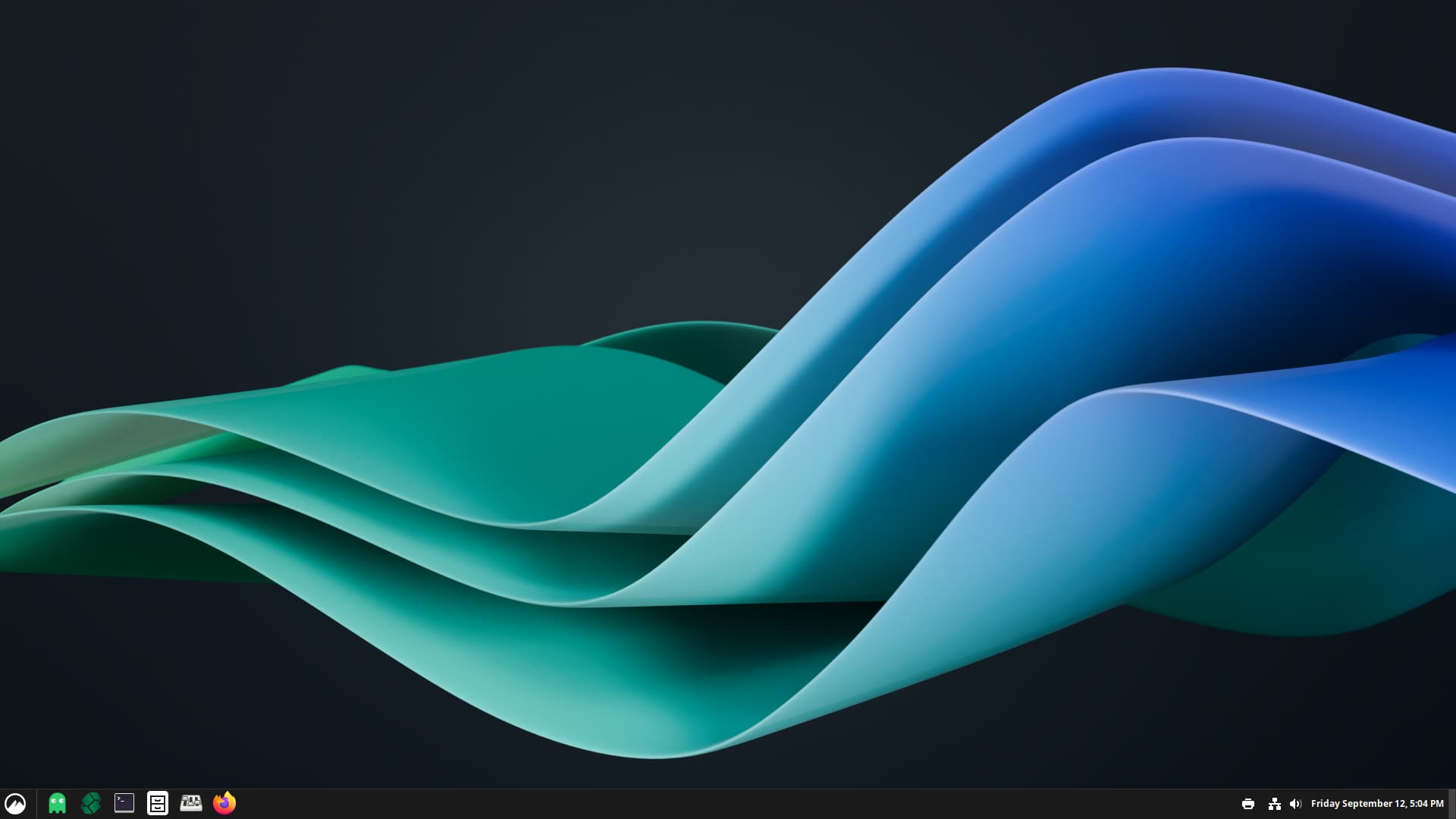
The Linux Authentication Nanny Problem: The reality of daily CachyOS use quickly reveals Linux’s biggest barrier for normal people – constant password demands. The two images below demonstrate this perfectly: wanting to install a simple partition tool triggers the package manager, which immediately demands administrative authentication. Your home computer becomes a bureaucratic nightmare where you need permission to perform basic tasks on hardware you own.
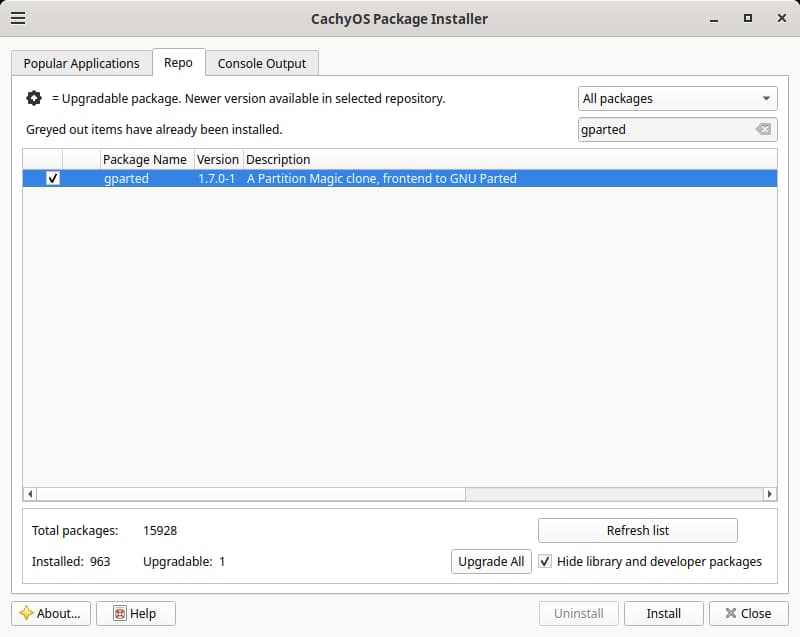
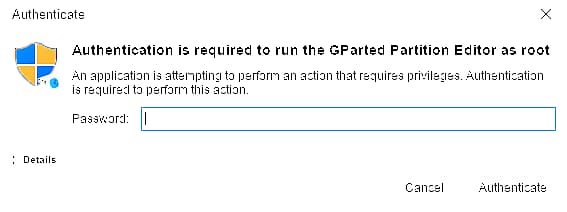
There was another authentication step after that – one asking “Y or n” before proceeding, but I couldn’t find that pic or grab it either. This authentication obsession exemplifies what Linus Torvalds meant about Linux not being designed for normal people. System administrators and programmers expect these security layers, but home users just want their computer to work without entering passwords for routine maintenance.
NVIDIA Driver Success – A Rare Linux Win: Next image is from the inxi -F command and that output reveals one area where CachyOS delivers: automatic NVIDIA driver detection and installation. The GTX 1050 Ti shows “driver: nvidia v: 580.82.09” – meaning CachyOS handled this notorious Linux pain point without manual intervention. For a distribution targeting gamers and performance users, getting NVIDIA graphics working out of the box represents a significant achievement.
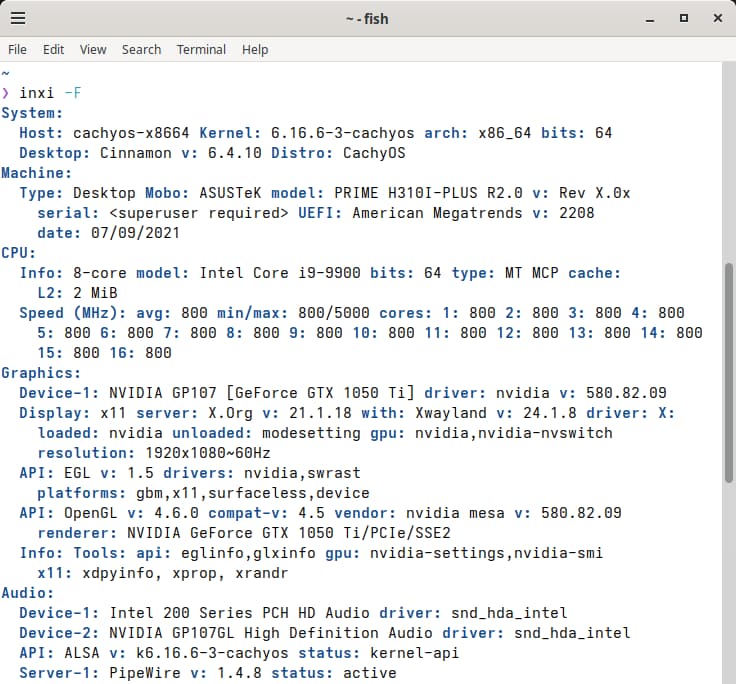
This automatic driver handling addresses one of the most common complaints from Windows users trying Linux – spending hours fighting with proprietary graphics drivers just to get basic display functionality working properly.
Outro
CachyOS delivers impressive performance optimizations and represents Arch Linux at its most polished. The BORE scheduler, automatic NVIDIA driver detection, and streamlined installation process demonstrate genuine technical achievements. However, the complexity involved makes it questionable for Windows users exploring Linux alternatives.
Gaming Performance Potential: Windows gamers with aging hardware might find CachyOS appealing for breathing new life into older systems. The performance optimizations could provide noticeable improvements in frame rates and system responsiveness – especially valuable for competitive gaming where every millisecond counts.
Hardware Support Reality Check: Arch Linux’s hardware compatibility remains problematic beyond graphics cards. Printers, scanners, and specialty peripherals often require manual configuration that challenges even experienced users. My Canon printer works seamlessly with Fedora, but would likely need troubleshooting on CachyOS. Even Fedora’s learning curve would overwhelm most Windows users exploring Linux options. Ubuntu’s straightforward installation process and extensive hardware database make it the most practical choice for users requiring reliable peripheral support without technical headaches.
Portable Installation Disappointment: CachyOS failed to install on USB storage during testing, missing an opportunity to showcase Linux’s portability advantages. Many distributions overlook that portable installations let users experiment without affecting their primary Windows setup – a perfect testing scenario for cautious newcomers.
Bottom Line for New Users: While CachyOS impresses technically, Ubuntu remains the safer recommendation for Windows users transitioning to Linux. The authentication hassles, hardware compatibility gaps, and installation complexity outweigh the performance benefits for most home users seeking a straightforward alternative to Windows.
